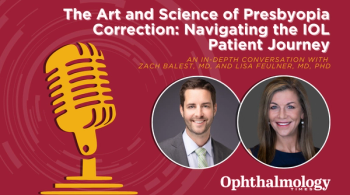
Novel device has potential to treat primary open-angle glaucoma
San Diego-A novel device (Trabectome, NeoMedix) has a potential role in treating primary open-angle glaucoma, said Malik Y. Kahook, MD, assistant professor, University of Colorado, and Rocky Mountains Lions Eye Institute, Aurora, CO.
San Diego—A novel device (Trabectome, NeoMedix) has a potential role in treating primary open-angle glaucoma, said Malik Y. Kahook, MD, assistant professor, University of Colorado, and Rocky Mountains Lions Eye Institute, Aurora, CO.
Also, the device has the potential to lower IOP while sparing the conjunctiva and avoiding a bleb, he said.
“The collective knowledge of this room would say that would be a positive thing,” Dr. Kahook told attendees, discussing evidence-based data related to the device during a symposium on alternatives to trabeculectomy.
“The [device] works by ablation of the trabecular meshwork as well as the inner wall of Schlemm’s canal,” he said.
A PubMed search for studies using the device reveals 10 articles, Dr. Kahook said. He detailed two of them but overall said, “In those patients where the procedure is successful, you get a pressure in the mid teens with a decrease in medication.”
Moving forward, Dr. Kahook said, “A better understanding of the physiology behind the procedure is needed, and it’s necessary to standardize the technique as well as correlate degree of tissue removal with the IOP-lowering.”
Also, randomized clinical trials are needed to compare use of the device with other procedures and use of the device in combination with other procedures, such as cataract extraction, “so we can better understand how this fits into our surgical decision-making,” Dr. Kahook concluded.
Newsletter
Don’t miss out—get Ophthalmology Times updates on the latest clinical advancements and expert interviews, straight to your inbox.
















































.png)


